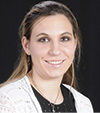Dr. Stephen Miller, AGI genetic research director, and Dr. Jason Archer of AbacusBio presented their findings and future implementation of their Angus sire index in a webinar as part of the 2020 virtual Beef Improvement Federation conference.
Sire priorities
The project began last December when Miller and Archer with then-president of AGI Dr. Dan Moser did a study tour which included packers, feeders, dairies, calf ranches and visiting USDA dairy genetic evaluation scientists. From this, they were able to outline what a dairy producer needs from an Angus sire.
Overall, Miller likened the dairy cow being to the cattle industry what the laying hen is to the poultry industry – they need significant muscling on top of fine bones. At the same time, dairy producers stressed the importance of high calving ease for safety and practicality.
Feedyard performance is the next big factor. Growth and feed conversion are the biggest concerns for Angus x Jersey crosses. Holstein crosses tend to perform better, but they are less efficient than straight beef animals. Hence, these animals need to have a “beefy” profile to compete in a feedlot environment alongside full-beef counterparts. Because of this, Miller noted, the ribeye area needed to be to the dairy indexes what carcass weight is to $Beef.
At the processor, carcass size was the biggest concern. Length is known to be an issue for Holsteins and Holstein crosses, as carcasses sometimes come in so big they drag on the ground from the rail.
Using this as a basic outline, Miller and Archer could then go on to make indexes which carried the same traits as $Beef, but with different emphasizes.
Two indexes for two breeds
Holsteins and Jerseys are by far the two most common dairy breeds in the United States. But, with so many differences between them with different traits relating to beef value, Archer and Miller decided the best thing was to create separate indexes.
“We’ve developed what we call $AxJ (Angus-on-Jersey value) and $AxH (Angus-on-Holstein value),” Miller said, noting they are set to be released on the AGI website this year. “These indexes are very highly correlated at 0.95 across current sires, but we think they’re different enough; it’s definitely worth having a different index for the Jerseys as opposed to the Holsteins.”
Besides the $Beef index, traits were also taken from the $Maternal. To account for the differences in the dairy breeds, the assumptions behind those index models needed to change, so Miller and Archer used the economics from the USDA dairy net merit assumptions.
This includes the facts that sires must be able to account for slower growth, poorer feed conversion, less fat cover, a longer feeding period and the lighter finished weight of dairy animals. Additional traits were added to penalize bulls with poor muscling or who were excessively tall.
“For the Holstein, we want those moderately framed, muscular bulls, with ease calving,” Archer said. “Here we are probably going to prioritize marbling over growth.”
Miller went on to explain that in the Holstein index, they applied a negative to carcasses that were too big, although the $Beef and yearling height expected progeny difference (EPD) have a positive correlation of 0.47.
For the Jersey cow, calving ease still remains a priority but emphasizes the need for additional growth and additional muscle.
“In the Jersey, height is not an issue. So, for that bull, we need high growth, ease of calving, very muscular,” Archer continued. “Here we really need to prioritize growth over marbling, knowing the Jersey breed brings with it marbling itself, so there’s lots of room to focus on growth.”
Understandably, not many bulls will fit the specifics needed to do well in these indexes. According to Miller, the bottom 5% of Angus sires for calving ease will never make the top 100 $AxH or $AxJ. Only the top 1% of the breed for yearling height is 1.3, so very few of those will ever make it to the top 10 for $AxH. Of 9,690 current sires, only 15 ranked over 150 $AxH, based on yearling height.
“With these dairy indexes there’s more way[s] for these bulls to fail; there’s more negatives that come in to play,” Miller said. “If they’re poor for CED [calving ease direct],they’re going to rack up some costs. Bulls that tick all the wrong boxes will compound discounts and have a seriously negative $AxJ or $AxH.”
There is much hope for the bulls who do rank high in these indexes, opening the door further for collaboration between dairy and beef industries. Producers on both sides can look forward to the changes and opportunity they will bring when formally released by AGI. ![]()
Jaclyn Krymowski is a freelancer based in Ohio.








